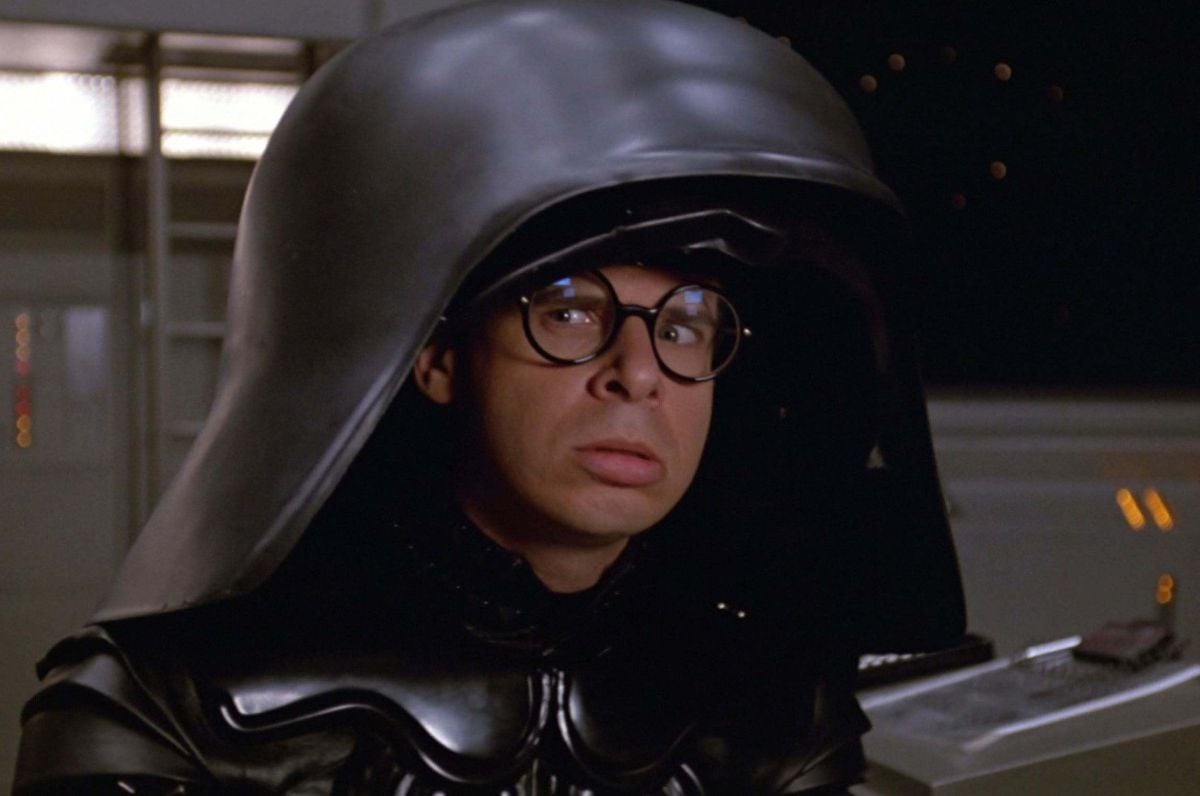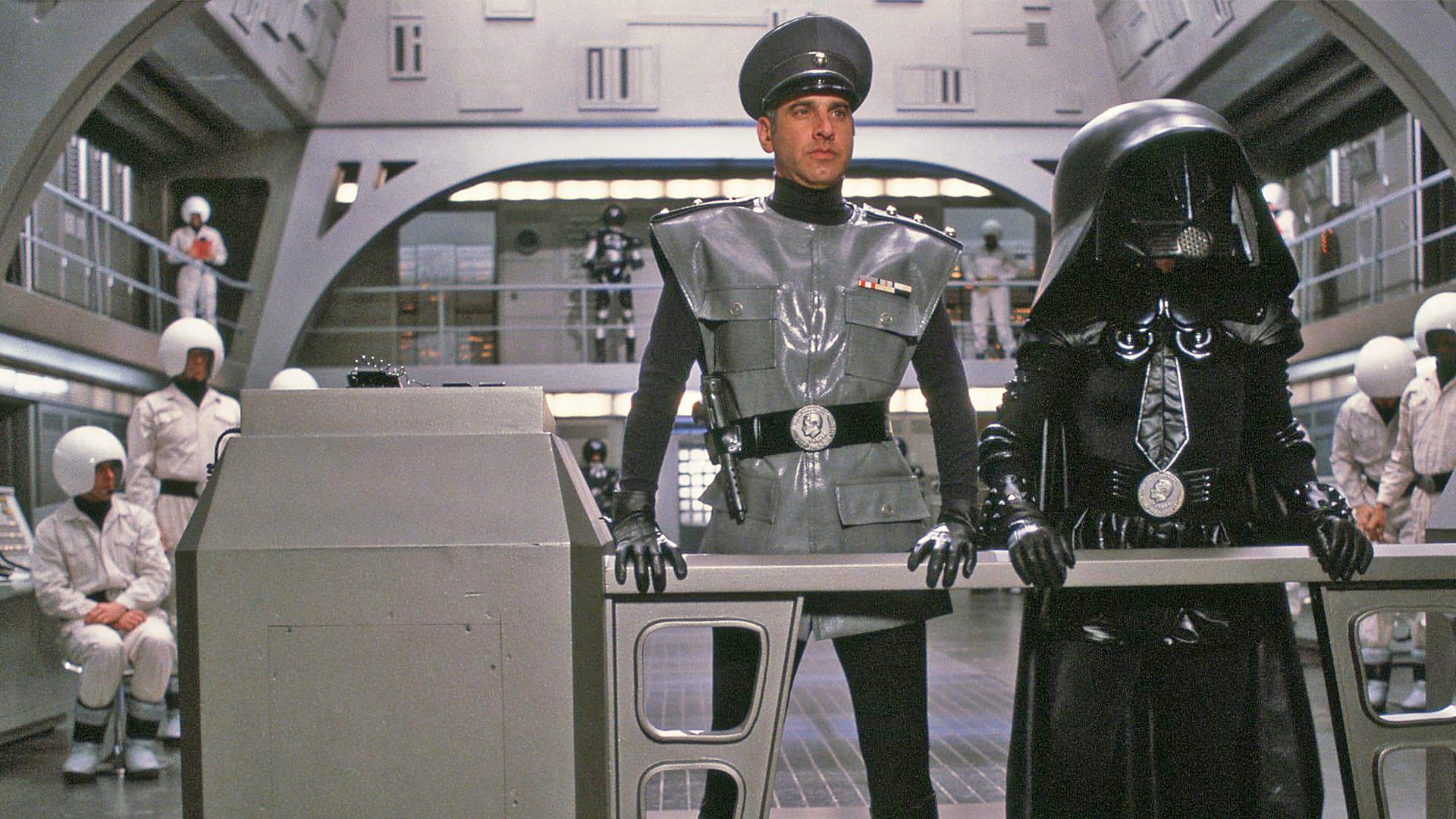
Satirical Effects for Spaceballs
Visual-effects supervisor Peter Donen and a team of experts lend their movie magic to Mel Brooks’ sci-fi comedy.

Spaceballs, Mel Brooks’s spaced-out satire of the science-fiction genre, is undoubtedly the fine comedic director’s most technically challenging film ever. No one has ever made an outright science-fiction comedy before, and one thing is certain — whether it succeeds or fails as humor — from a visual effects standpoint, everything has to be perfect.
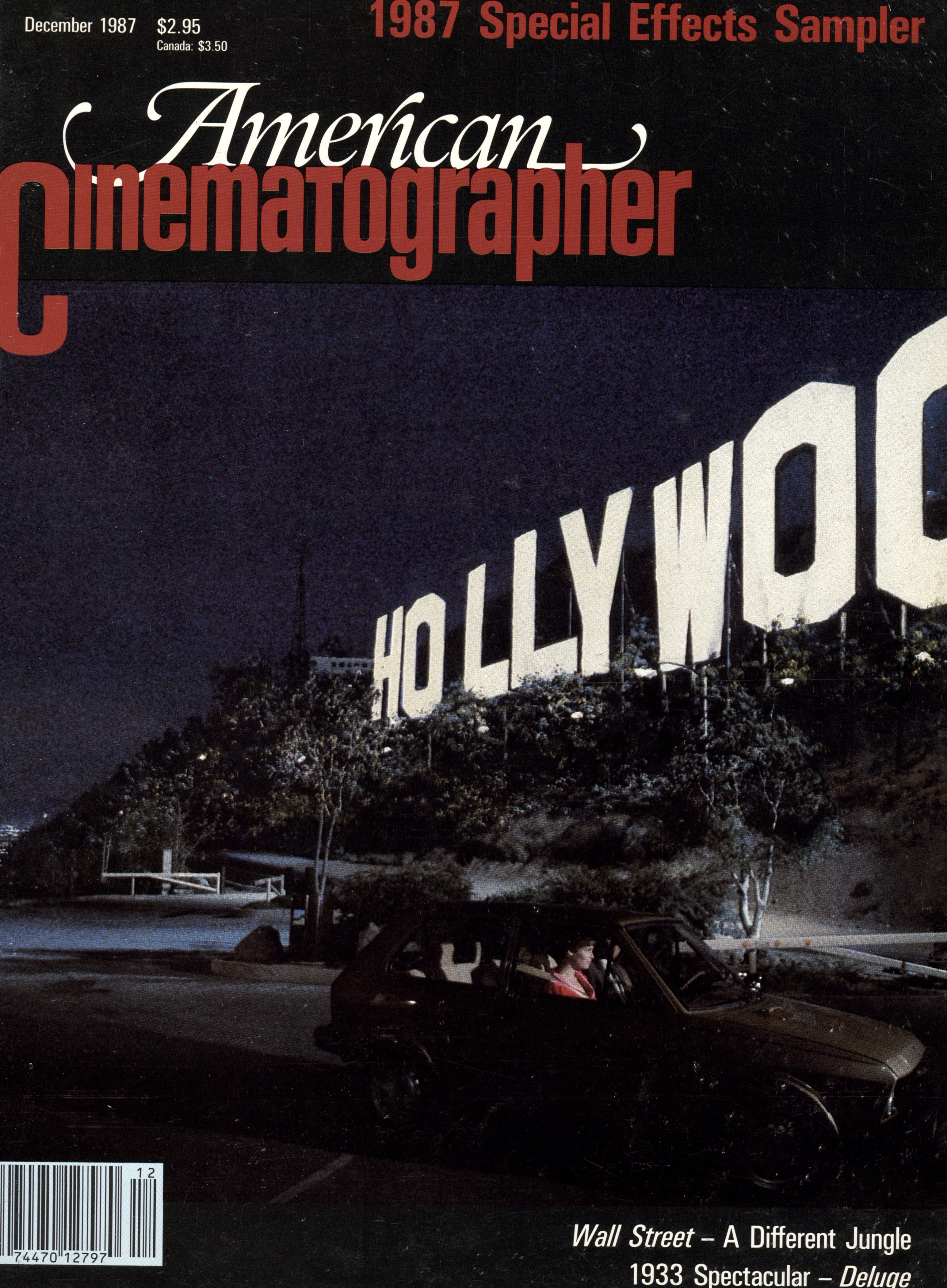
Brooks promised to deliver Blazing Saddles in space, so to fulfill his epic vision, he selected Peter Donen, a visual-effects supervisor who worked on Superman, Outland and Altered States. Donen strove to help Brooks achieve the perfection he demanded, while also keeping the director aware of the cost of his gags “Eventually, we broke the effects down into two basic categories: those that were plot-line shots, like a spaceship flying from one place to another, and those that were strictly for laughs. We looked at each of the joke shots and asked ourselves, ‘Is this a $100,000 or a $10,000 joke?’ These were the decisions that Mel had to make. Some of the jokes were even simpler to do than Mel thought, so he’d say, ‘Great, let’s do two of them!’ There were some that were more complicated and more expensive than he thought, and he’d say, ‘That’s not a $50,000 joke, it’s only a $25,000 joke. If you can figure out a way to do it for $25,000 we’ll keep it in the movie, otherwise lose it.”
While the effects budget was still up in the air, Donen tried to bring some elements of what promised to be one of the largest projects he’d ever worked on down to Earth. Nearly a year before the release of Spaceballs, therefore, Donen had selected Grant McCune, Apogee’s chief modelmaker, to create the miniatures for the film before he’d made a determination as to which effects facility would actually handle the special effects chores.
“In June of last year,” Donen relates, “we knew that our release date was to be sometime in early summer of 1987, which meant that on or about September 1, 1986, we had to be going almost full guns in order to get the 150 odd shots we had scheduled at that time into the picture. We had the greatest confidence in Grant McCune and the model shop at Apogee to handle the miniature construction, but we hadn’t yet decided whether to set up a facility of our own or to hire an existing effects facility to handle the huge workload. We felt if we decided to do the effects in-house that we’d lose a lot of sleep over it, so it came down to Apogee. They were already building the models, and they had a lot more Star Wars-type experience than the other companies we looked at. In the end, everyone concerned felt more comfortable keeping the work here at Apogee.”
As everything about the Spaceballs production was already leaning towards the unconventional, Donen decided to continue in this vein and begin effects photography prior to the commencement of principal photography. “This was fairly unique,” Donen explains, “we began about a month before principal photography had started, so the sets weren’t finished at that point. Originally, we were only to concern ourselves with the most basic things like spaceships flying by, at least that was the theory at the time, but what happened in practice was that once we started, we were committed to going down that road. Although we were mainly handling the non-live action footage at that point, we forged right ahead and once they started into full production we started shooting our composite plates on three stages at Lorimar.”
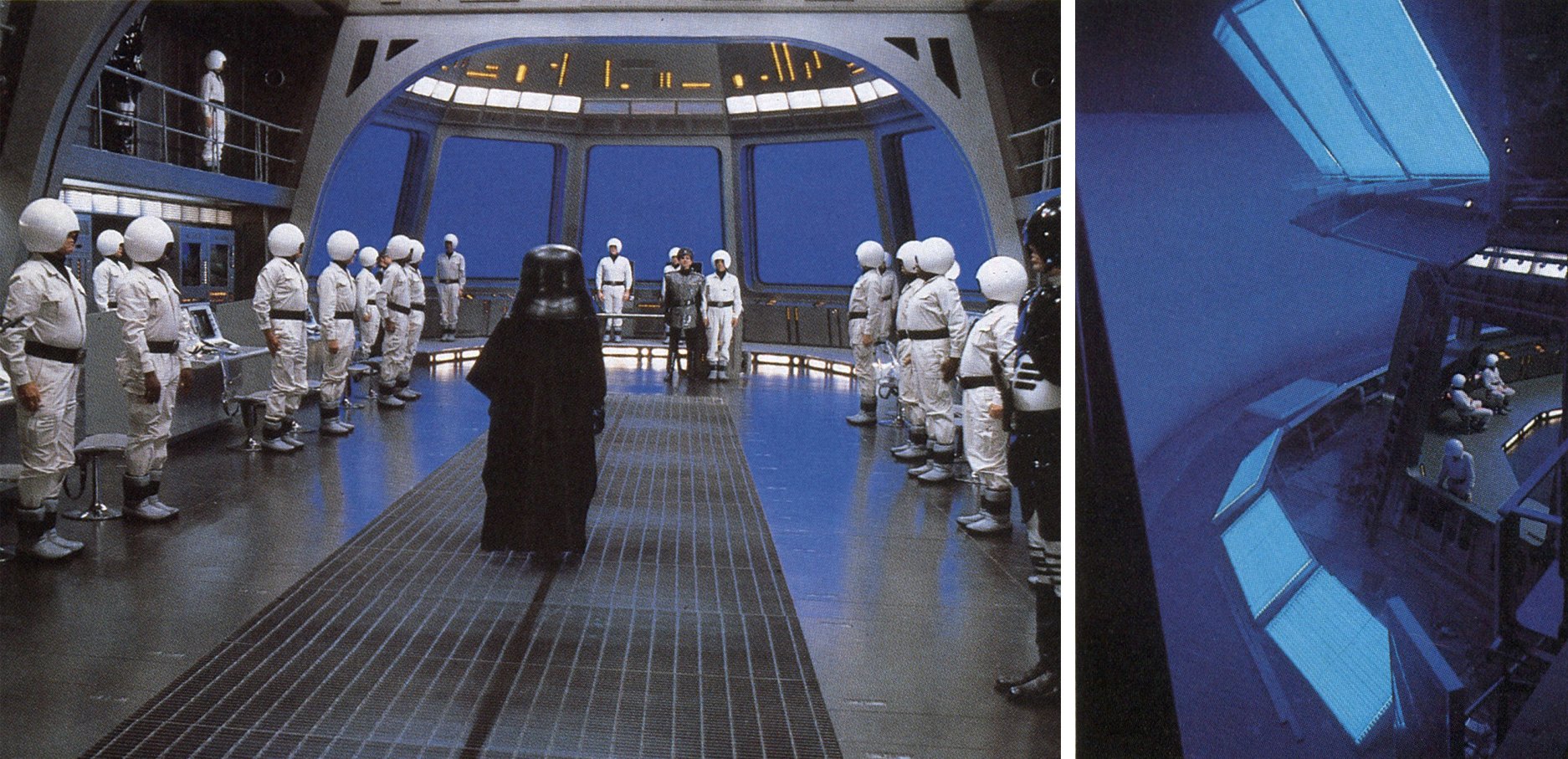
fluorescent tubes.
The man responsible for ensuring that Spaceballs’ effects came in on time and under budget was special visual effects producer Percy Angress, who compares working on effects pictures to giving birth. “There’s a nine-month gestation period for special effects,” he jokes. “My job during that period was to make sure that Donen got what he needed to do the effects properly.
“One of the advances we’ve made,” Angress enthuses, “is to hook up video camera via taps to our motion-controlled motion picture cameras. Using this new technology, we can take a move that we’ve programmed on stage and play it back on a video monitor in real-time. With motion control, a five-second shot on screen can take five minutes to shoot; the video process gives us the capacity to view these shots almost instantly. In the past, we’ve shot black-and-white film tests, so by the time we shot a move, processed it, and viewed it, there was a 30-minute turnaround. Using the video tap, we can now refine our motion control moves much more quickly and smoothly.”
Before the motion control cameras could roll, however, indeed, before the model shop could build any of their models, visual effects art director Steven Dane had to translate production designer Terry Mars and art director Harold Michaelson’s two-dimensional spacecraft designs into geometric, three-dimensional architectural realities. “I was called in around the beginning of September,’86,” Dane says, “and I began taking the initial concept sketches from the production designer and turning them into blueprints for something we could make.”

Most difficult of the craft Dane had to blueprint was the immense Spaceball One Cruiser, whose tremendous proportions required dozens of blueprint sheets to guide the modelmakers. “I broke the design down into certain manageable geometric solids,” Dane remarks, “and I had to anticipate it coming apart for shooting with individual sections as well as for the transformation.” Not only is Spaceball One, at 17' long, one of the largest spacecraft models ever built, it also had to be capable of transforming into the sinister Megamaid, a Death Star-sized mechanical housekeeper complete with a vacuum designed to suck all the usable oxygen from the planet Druidia and transfer it to the planet Spaceball. “The entire design of the Cruiser is based on a massive 4 ½" diameter tube that became the spine of the ship. I had to make sure there would be room in there for the neon tubes and fiber optics which give us all of our gleaming lights. Essentially, I designed the bones and added the first layer of skin, which is flat, and then the modelmakers create the surface excitement, the definition of the guns and the surface detail.”

“There was an incredible amount of detail,” chief modelmaker McCune moans in mock agony, “so much so that I never want to see that much detail ever again! But that’s what makes it funny — it’s the epitome of all the modelmaking that’s gone on since 2001.”
Aside from the obvious problems associated with maneuvering a 17' long model on stage, the major problem that McCune and his crew faced was convincingly transforming Spaceball One into Megamaid. “The metamorphosis was really difficult,” McCune affirms. “We shot for a real simple solution, figuring that since it was a comedy, we could get by without too much technical scrutiny. Even though the proportions of everything were four times too long for Megamaid’s eventual dimensions, we didn’t think audiences would come away saying, ‘That doesn’t fit in there!’ We finally added a couple of shots that were more expensive than the others, but which really sold the transformation, because you really see these huge pieces transforming.
“Before we added shots of Megamaid’s breast and head flipping up out of the front section of the Cruiser, all we had were small close-up sections that transformed — an arm that shot out of a bulkhead, for instance — and we felt that the audience wouldn’t get a sense of that huge mass transforming. It was a tough mechanical task it’s almost the same as engineering a real transformer. Fortunately, since we only had to work within the limits of the camera’s eye, we could cheat everywhere else.”
The man who shot most of the transformation sequence on Apogee’s motion control rigs, effects cinematographer David Hardberger, found it difficult to work with the huge amount of mechanical hardware inside the various transformable sections. “The model shop was forced to use a number of devices that aren’t commonly used in order to make the most use of the limited space inside the transformation sections, and we ended up fighting those sometimes,” he explains, adding that the real problem photographically was to create a feeling of size, paradoxically, in the huge Spaceball One: “It was like filming a 17' pipe with a lot of bumps on it, and if we shot it from certain angles everything seemed to compress together, making it appear shorter than it really was. In order to fight that, we had to be very judicious about the angles we picked in order to give it the proper feeling of scale. It was kind of a trick.”
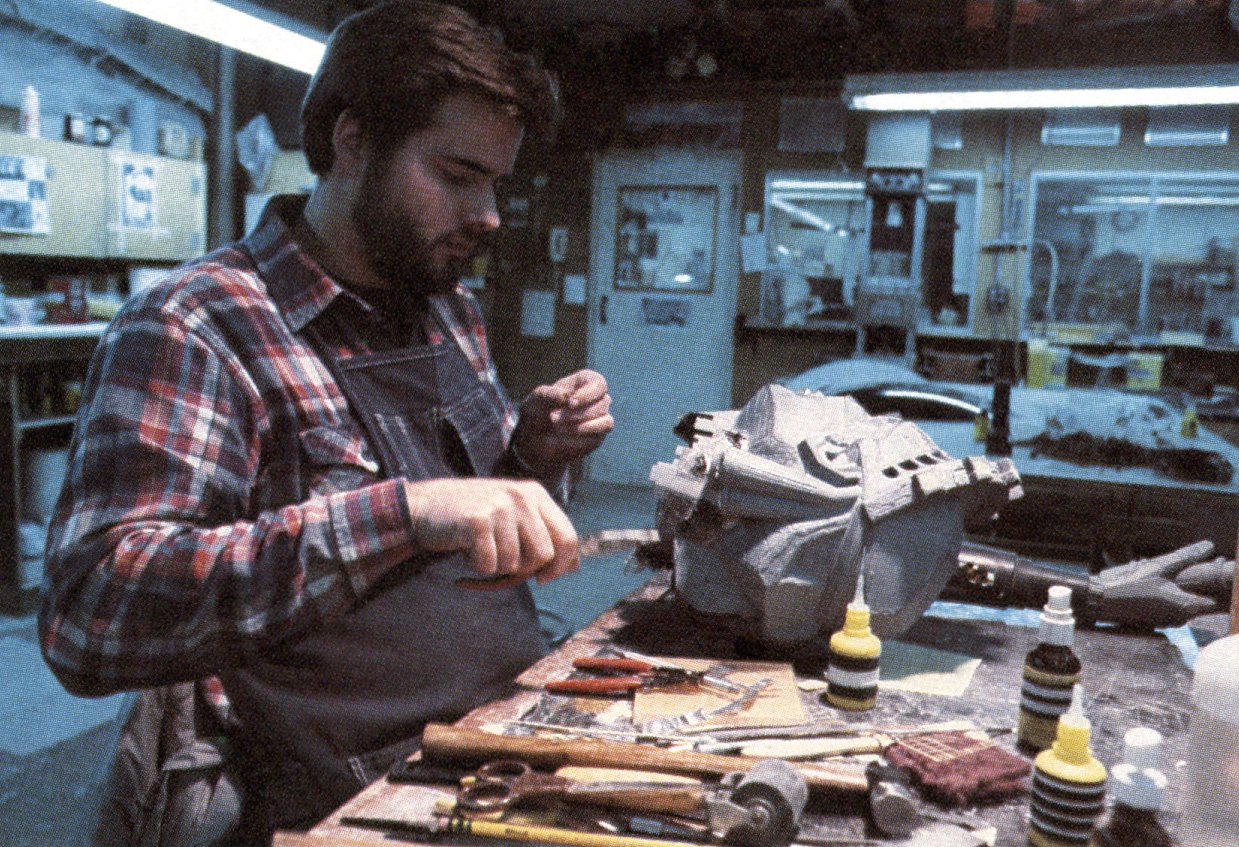
Trickier still were the logistics involved in executing a complex combination of live-action and miniature photography for a sequence in which actor John Candy — as Barf, the half-man half-dog Mawg — climbs from the spaceship of the hero to another as the two craft are about to be swallowed whole by Spaceball One. “That was difficult to plan,” Donen admits, “in the sense that we had to shoot everything backward: all of the models had to be shot first because of scheduling, then we shot John Candy climbing down the ladder.”
In addition to Spaceball One, this sequence involved two ships that were, in many ways, even more difficult to build and shoot: the hero’s [Lone Star] Eagle 5, a star-crossed Winnebago, and the princess’s Honeymoon Coupe. Since both miniature craft had to match exactly with full-scale prop vehicles, the demands on the modelmakers were exacting. While chief modelmaker McCune acknowledges that the Spaceball One “used more fiber optics than I’ve put into all the models I’ve ever done!,” he is quick to point out that the Eagle 5 Winnebago was actually much more difficult in terms of the number of man-hours and problems to solve: “We had to copy the full-sized Winnebago exactly, it had to match up to quick cuts, and it had to hold up to intense scrutiny where you could see a doorknob on it. It was a mind-boggling, intensive problem because it had a lot of kinetic features on it. For this reason, we had to put a number of motion control motors inside, all of which had to fit into a relatively small space. Putting all of that into that very small model was very difficult, kind of like trying to put ten pounds of stuff into a five-pound box.”
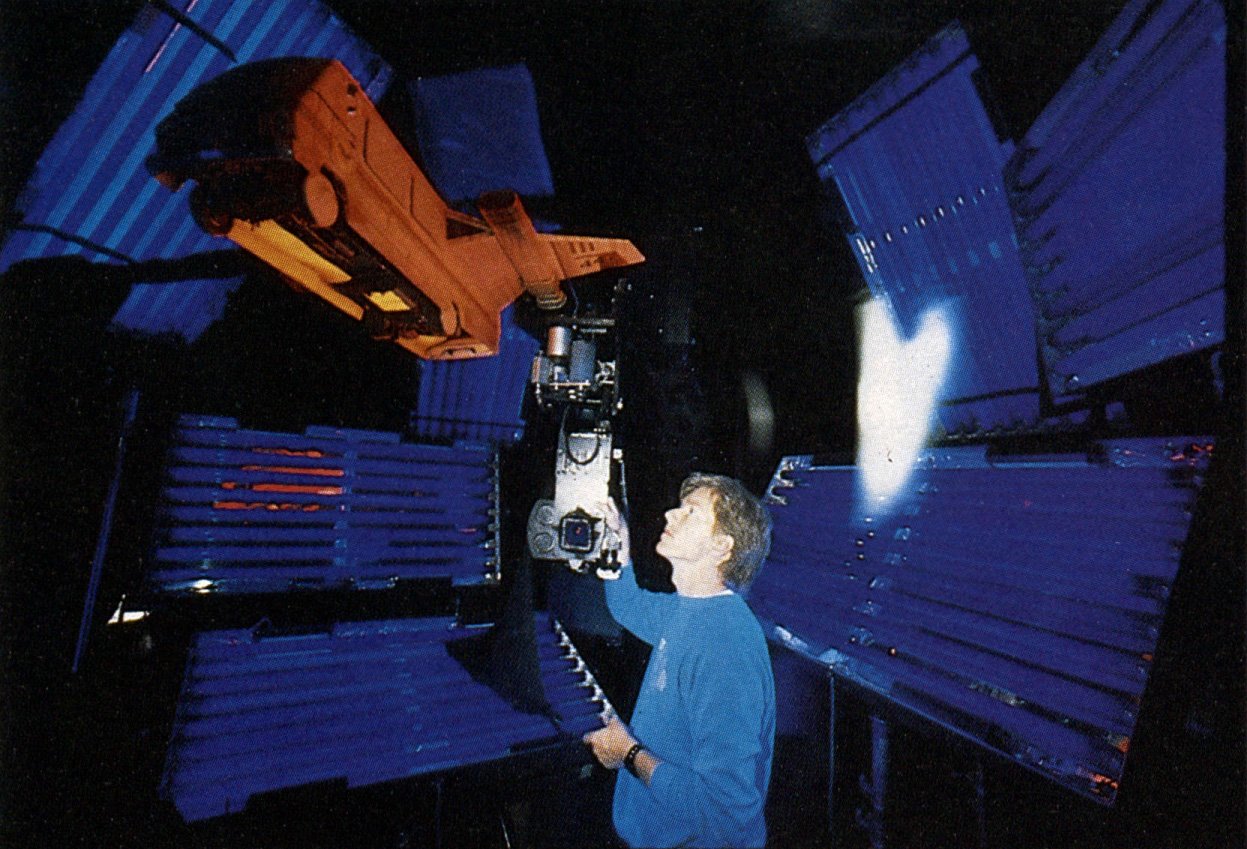
“I had a little trouble with the Winnebago,” Hardberger adds. “The Winnebago was generally easy to work with because most of what we had to do with it was pretty straightforward and the model was exquisitely done. The biggest problem I experienced was that because the side of the Winnebago was really shiny, which could have presented some matting problems, we had to make sure we didn’t get any key light reflection off the ship.”
As Candy descends the ladder from the Eagle 5, he is seen to enter a round, white craft, the princess’s Honeymoon Coupe. Although the coupe was relatively easy to build, it did present a number of challenges photographically. “Since we were matching to a full-sized ship, once again we had to be very careful to light our model and shoot it to match the real vehicle,” Hardberger says.
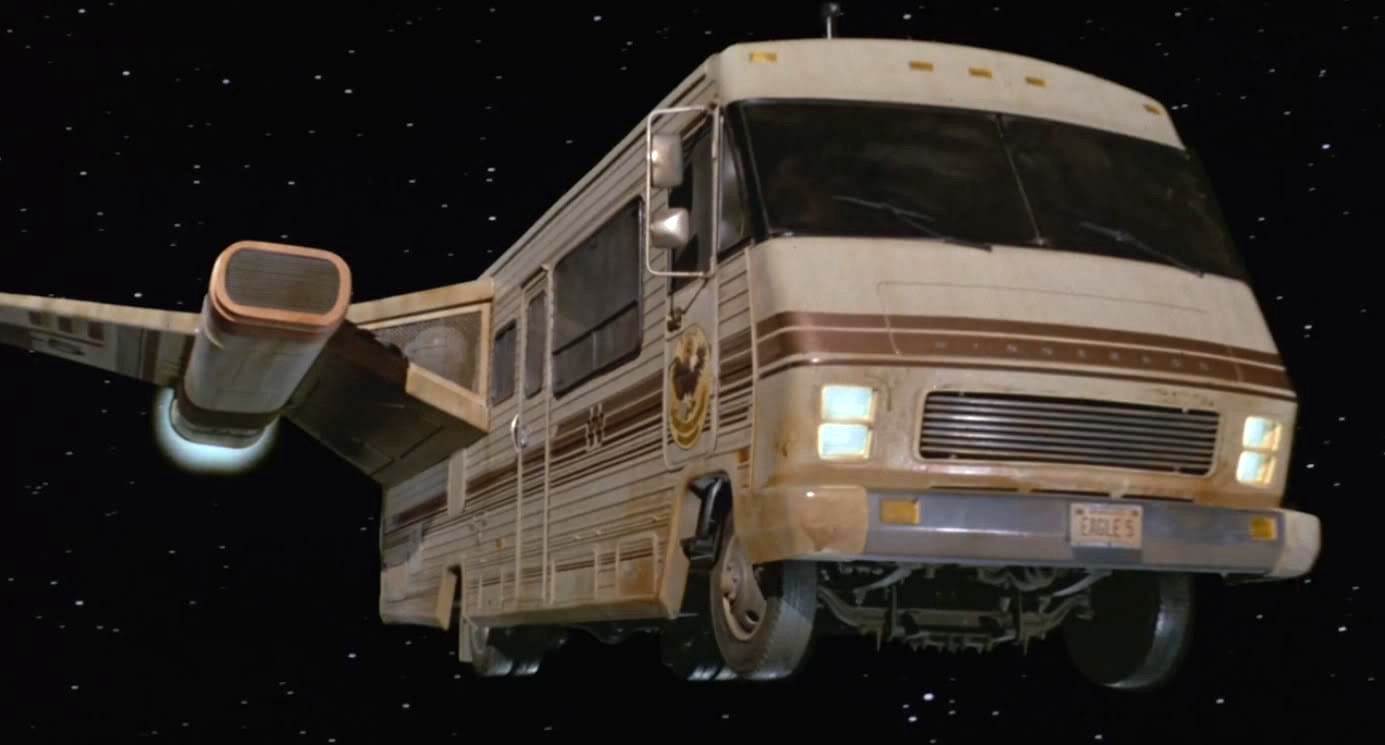
After the model photography was completed, the live-action segment involving John Candy had to be shot on-stage at Lorimar, where space was at a premium. “The congestion was amazing!” effects cinematographer John Sullivan marvels. “It wasn’t so much that we couldn’t find a place to shoot, it was just a matter of clearing enough space to lay down our bluescreen, string it and pull it up into position.”
Fortunately for Sullivan, it had been previously determined that the shot would incorporate Apogee’s Blue Max front-screen projection system using a beam splitter projector and a nodalized Panaflex camera. It is a highly efficient bluescreen method that requires a minimum of space. “If we had been working with a standard bluescreen, we would’ve had a terrible space problem getting enough lights in there to make it work, so the Blue Max was ideal,” Sullivan says. “There was very little heat generated, even though we were working at a 4.5 stop. We would’ve had trouble getting up to that high a stop, however, had we not had the high speed 5295 bluescreen stock. It was very beneficial.”

For optical supervisor Roger Dorney, combining all of the disparate elements that make up a shot like this was a difficult task that required mixing several different matting techniques, the rule not the exception on Spaceballs. “It was a real difficult shot,” Dorney says. “As things do, the ideas changed, and it was decided that the live-action bluescreen shot had to be reduced, which made it a nightmare since I had to start mixing different techniques again. Originally the live-action part of the shot was supposed to be 3 or 4 times larger than it appears to be in the final composite. I combined the reduced bluescreen image of John Candy with two reverse bluescreen shots of the Winnebago and the Honeymoon Coupe. Since the original size relationships had changed, all of the elements had to be jerked around and made to fit, but it came out pretty well.
“In general,” Dorney continues, “we had to marry a lot of different matting techniques together throughout the show. Some of our shots used conventional bluescreen, reverse bluescreen, roto-mattes, and other types of mattes all in one. Each of those techniques is usually treated a little differently, so in combining them it gets to be like a giant jigsaw puzzle we’ve got to put together without degenerating each of those units to the point where they look like junk. Staying as close to first-generation as possible makes it difficult to marry these different matting techniques.”
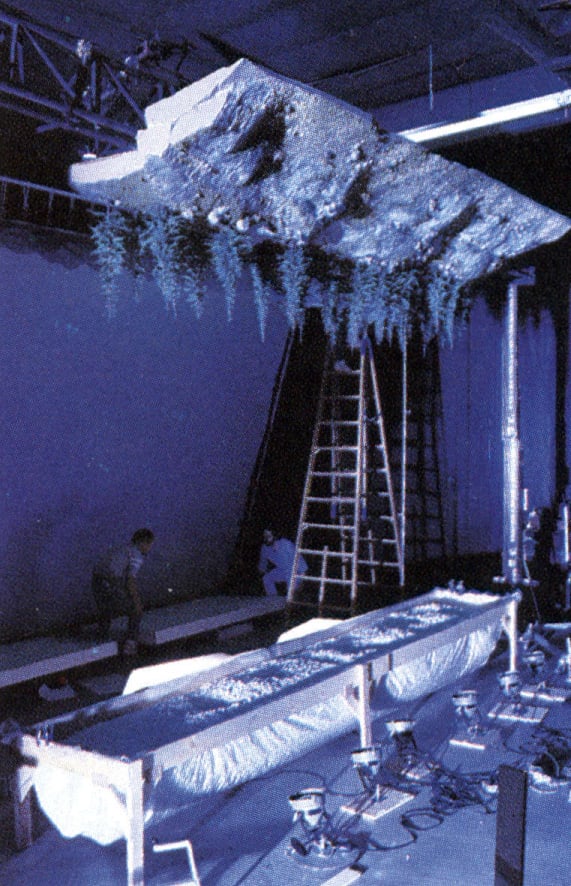
One of the more interesting “collages of technique” Dorney assembled involves the planet Druidia’s translucent shield, a glass dome that entirely envelops the planet. Problems arose when a doorway in the glass dome needed to open and close to allow the passage of spacecraft to and from the planet’s surface. “We originally tried to do it practically using a dome with a hole cut in it, but that’s exactly what it looked like,” Dorney admits. “We ended up doing the effect utilizing graphics to represent the doorway. The door has a little filligreed edge to it which overlaps both the open door and the surface of the dome. Of course, there’s a bunch of shots where the dome opening has to be combined with planet Druidia, as well as a ship gliding down through the doorway and another cruiser all in one, which necessitated the blending of a number of different techniques.”
Keeping a balanced sense of the absurd was one of the Spaceballs effects crew’s greatest challenges. “All along,” recalls Donen, “we kept reminding ourselves that this is a comedy. As effects technicians, we are very easily wrapped up in trying to capture the beauty of spaceflight, for example, but we didn’t let that happen on this picture. We were trying to do Blazing Saddles as space opera, so everything in this film had to be done with humor.”

In keeping with the Brooks style of parody, it would have been jarring had any of the Spaceballs effects departed too radically from traditional Star Wars-Alien-Star Trek-type effects. “‘Traditional’ is exactly the kind of show we’re trying to do,” Dorney adds emphatically. “It’s a comedy, so the effects have to come second. Since the point of the film is to use various images that have been created for Star Wars, Battlestar Galactica and Star Trek, the effects are supposed to look the way they did in those shows. If we went off and did it our way, it wouldn’t be valid. The point is to duplicate those effects.
“One thing that’s kind of unique is that we’ve all worked on at least one of the shows we’re borrowing from. Half the crew worked on Star Wars, I worked on the Star Trek TV show, a bunch of us worked on Star Trek: The Motion Picture, and a couple people worked on Close Encounters, so it’s kind of like old-home week!”
If it feels somewhat nostalgic for the effects crew to parody the landmark visuals of films that less than a decade before changed the look of motion pictures forever, it only serves to point up how quickly the state of the art becomes status quo. The “traditional” effects of Spaceballs are exactly the same type of effects that forced [ASC members] John Dykstra and Richard Edlund et al to reinvent the effects field in 1977, yet today they are commonplace. “The effects of Spaceballs are straightforward in the sense that we didn’t need to do a lot of R&D to satirize and parody this genre,” Donen says. “We’re not talking about a new bang for 9-year-olds. The bang an audience gets out of this movie should be a rolling, splitting side ache from laughing throughout this picture. That’s what making this movie is all about.”
